Chandan Karmakar
TrajSyn: Privacy-Preserving Dataset Distillation from Federated Model Trajectories for Server-Side Adversarial Training
Dec 17, 2025Abstract:Deep learning models deployed on edge devices are increasingly used in safety-critical applications. However, their vulnerability to adversarial perturbations poses significant risks, especially in Federated Learning (FL) settings where identical models are distributed across thousands of clients. While adversarial training is a strong defense, it is difficult to apply in FL due to strict client-data privacy constraints and the limited compute available on edge devices. In this work, we introduce TrajSyn, a privacy-preserving framework that enables effective server-side adversarial training by synthesizing a proxy dataset from the trajectories of client model updates, without accessing raw client data. We show that TrajSyn consistently improves adversarial robustness on image classification benchmarks with no extra compute burden on the client device.
NeuroSleepNet: A Multi-Head Self-Attention Based Automatic Sleep Scoring Scheme with Spatial and Multi-Scale Temporal Representation Learning
Dec 31, 2024



Abstract:Objective: Automatic sleep scoring is crucial for diagnosing sleep disorders. Existing frameworks based on Polysomnography often rely on long sequences of input signals to predict sleep stages, which can introduce complexity. Moreover, there is limited exploration of simplifying representation learning in sleep scoring methods. Methods: In this study, we propose NeuroSleepNet, an automatic sleep scoring method designed to classify the current sleep stage using only the microevents in the current input signal, without the need for past inputs. Our model employs supervised spatial and multi-scale temporal context learning and incorporates a transformer encoder to enhance representation learning. Additionally, NeuroSleepNet is optimized for balanced performance across five sleep stages by introducing a logarithmic scale-based weighting technique as a loss function. Results: NeuroSleepNet achieved similar and comparable performance with current state-of-the-art results. The best accuracy, macro-F1 score, and Cohen's kappa were 86.1 percent, 80.8 percent, and 0.805 for Sleep-EDF expanded; 82.0 percent, 76.3 percent, and 0.753 for MESA; 80.5 percent, 76.8 percent, and 0.738 for Physio2018; and 86.7 percent, 80.9 percent, and 0.804 for the SHHS database. Conclusion: NeuroSleepNet demonstrates that even with a focus on computational efficiency and a purely supervised learning approach, it is possible to achieve performance that is comparable to state-of-the-art methods. Significance: Our study simplifies automatic sleep scoring by focusing solely on microevents in the current input signal while maintaining remarkable performance. This offers a streamlined alternative for sleep diagnosis applications.
Machine Learning Models for the Identification of Cardiovascular Diseases Using UK Biobank Data
Jul 23, 2024


Abstract:Machine learning models have the potential to identify cardiovascular diseases (CVDs) early and accurately in primary healthcare settings, which is crucial for delivering timely treatment and management. Although population-based CVD risk models have been used traditionally, these models often do not consider variations in lifestyles, socioeconomic conditions, or genetic predispositions. Therefore, we aimed to develop machine learning models for CVD detection using primary healthcare data, compare the performance of different models, and identify the best models. We used data from the UK Biobank study, which included over 500,000 middle-aged participants from different primary healthcare centers in the UK. Data collected at baseline (2006--2010) and during imaging visits after 2014 were used in this study. Baseline characteristics, including sex, age, and the Townsend Deprivation Index, were included. Participants were classified as having CVD if they reported at least one of the following conditions: heart attack, angina, stroke, or high blood pressure. Cardiac imaging data such as electrocardiogram and echocardiography data, including left ventricular size and function, cardiac output, and stroke volume, were also used. We used 9 machine learning models (LSVM, RBFSVM, GP, DT, RF, NN, AdaBoost, NB, and QDA), which are explainable and easily interpretable. We reported the accuracy, precision, recall, and F-1 scores; confusion matrices; and area under the curve (AUC) curves.
Optimising complexity of CNN models for resource constrained devices: QRS detection case study
Jan 23, 2023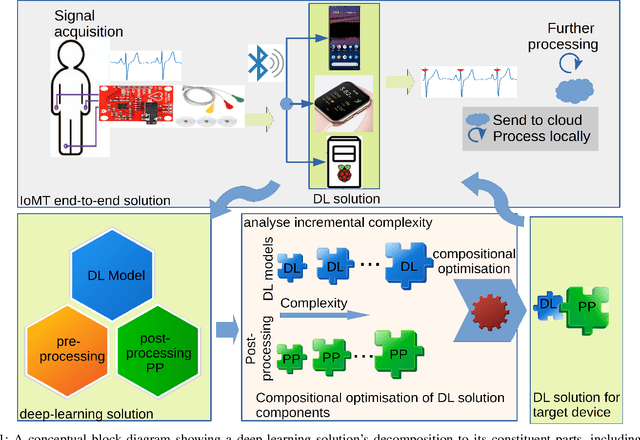
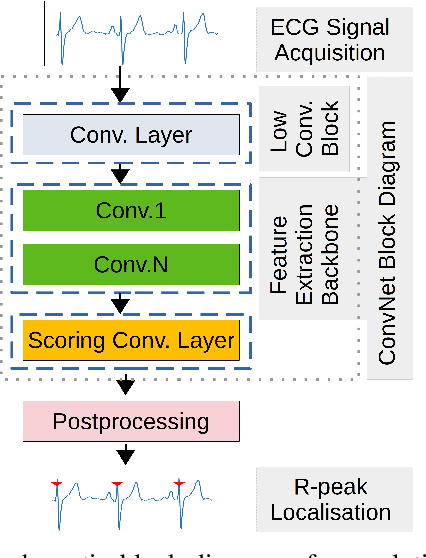
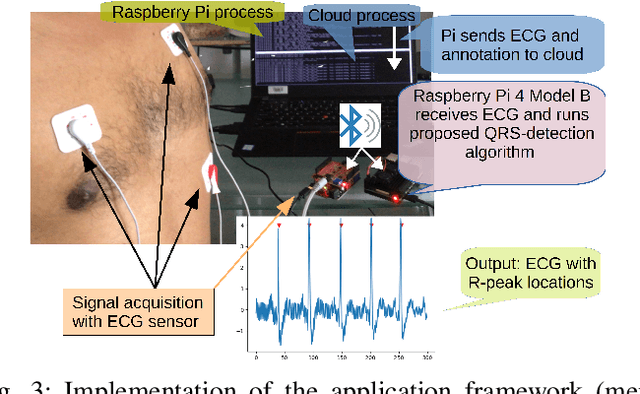
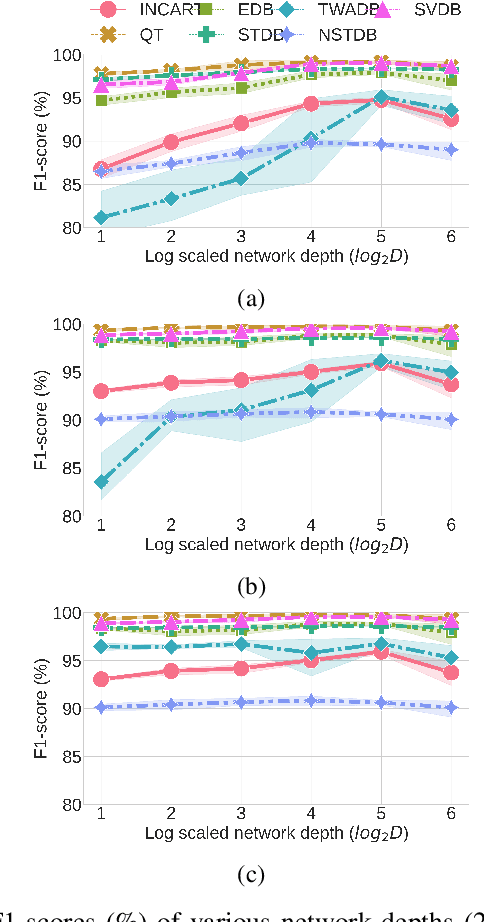
Abstract:Traditional DL models are complex and resource hungry and thus, care needs to be taken in designing Internet of (medical) things (IoT, or IoMT) applications balancing efficiency-complexity trade-off. Recent IoT solutions tend to avoid using deep-learning methods due to such complexities, and rather classical filter-based methods are commonly used. We hypothesize that a shallow CNN model can offer satisfactory level of performance in combination by leveraging other essential solution-components, such as post-processing that is suitable for resource constrained environment. In an IoMT application context, QRS-detection and R-peak localisation from ECG signal as a case study, the complexities of CNN models and post-processing were varied to identify a set of combinations suitable for a range of target resource-limited environments. To the best of our knowledge, finding a deploy-able configuration, by incrementally increasing the CNN model complexity, as required to match the target's resource capacity, and leveraging the strength of post-processing, is the first of its kind. The results show that a shallow 2-layer CNN with a suitable post-processing can achieve $>$90\% F1-score, and the scores continue to improving for 8-32 layer CNNs, which can be used to profile target constraint environment. The outcome shows that it is possible to design an optimal DL solution with known target performance characteristics and resource (computing capacity, and memory) constraints.
Learning post-processing for QRS detection using Recurrent Neural Network
Oct 07, 2021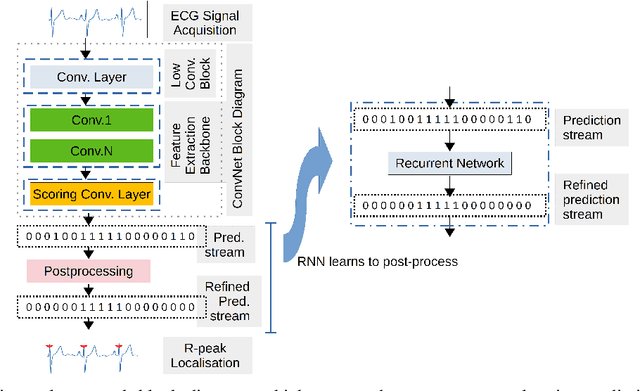
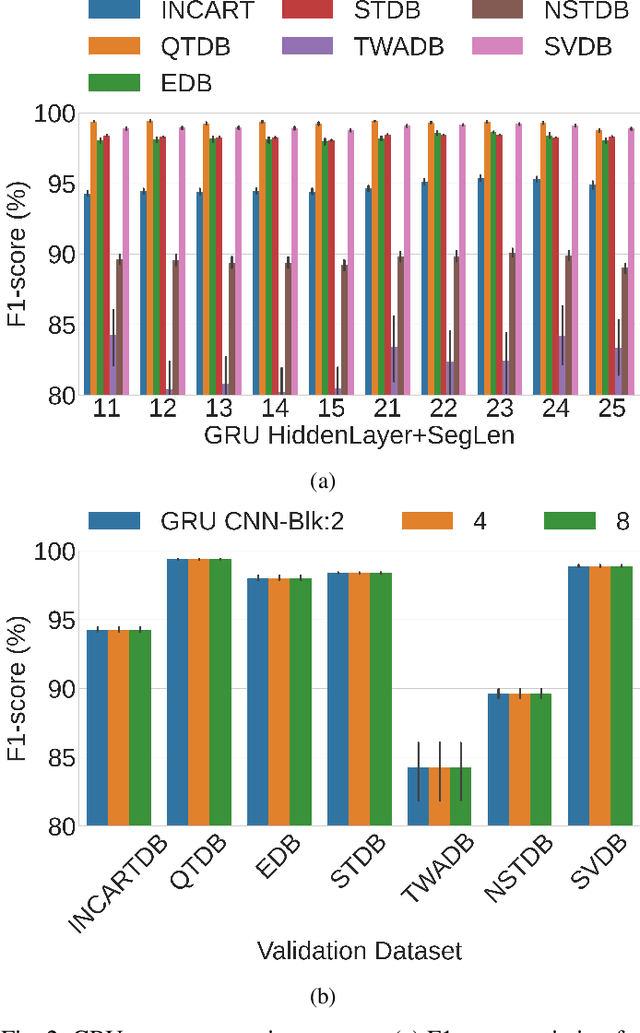
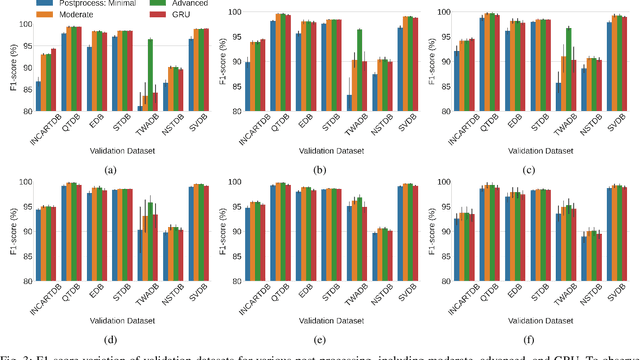

Abstract:Deep-learning based QRS-detection algorithms often require essential post-processing to refine the prediction streams for R-peak localisation. The post-processing performs signal-processing tasks from as simple as, removing isolated 0s or 1s in the prediction-stream to sophisticated steps, which require domain-specific knowledge, including the minimum threshold of a QRS-complex extent or R-R interval. Often these thresholds vary among QRS-detection studies and are empirically determined for the target dataset, which may have implications if the target dataset differs. Moreover, these studies, in general, fail to identify the relative strengths of deep-learning models and post-processing to weigh them appropriately. This study classifies post-processing, as found in the QRS-detection literature, into two levels - moderate, and advanced - and advocates that the thresholds be learned by an appropriate deep-learning module, called a Gated Recurrent Unit (GRU), to avoid explicitly setting post-processing thresholds. This is done by utilising the same philosophy of shifting from hand-crafted feature-engineering to deep-learning-based feature-extraction. The results suggest that GRU learns the post-processing level and the QRS detection performance using GRU-based post-processing marginally follows the domain-specific manual post-processing, without requiring usage of domain-specific threshold parameters. To the best of our knowledge, the use of GRU to learn QRS-detection post-processing from CNN model generated prediction streams is the first of its kind. The outcome was used to recommend a modular design for a QRS-detection system, where the level of complexity of the CNN model and post-processing can be tuned based on the deployment environment.
Choosing a sampling frequency for ECG QRS detection using convolutional networks
Jul 04, 2020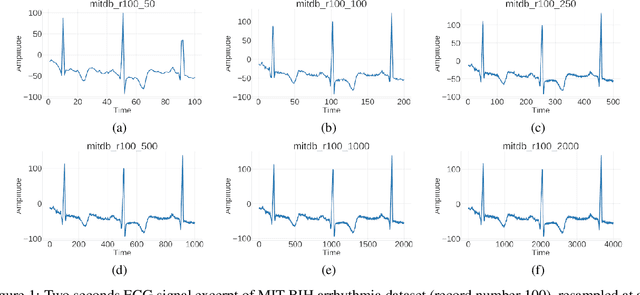
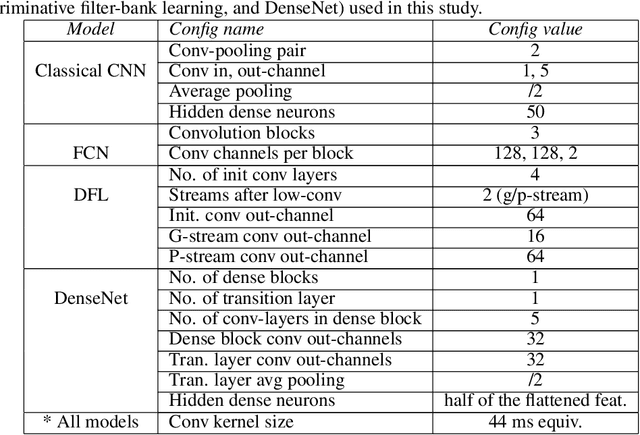

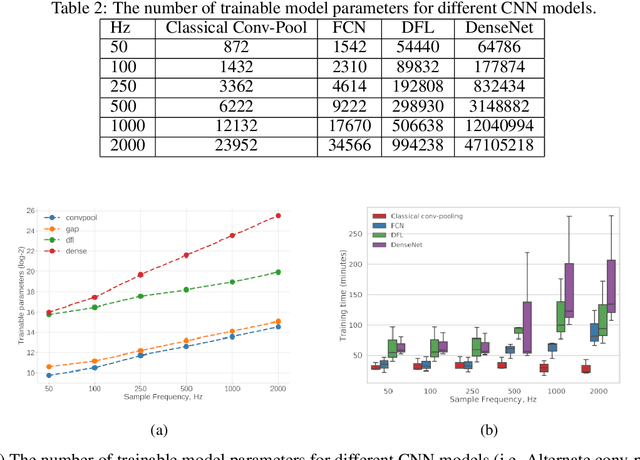
Abstract:Automated QRS detection methods depend on the ECG data which is sampled at a certain frequency, irrespective of filter-based traditional methods or convolutional network (CNN) based deep learning methods. These methods require a selection of the sampling frequency at which they operate in the very first place. While working with data from two different datasets, which are sampled at different frequencies, often, data from both the datasets may need to resample at a common target frequency, which may be the frequency of either of the datasets or could be a different one. However, choosing data sampled at a certain frequency may have an impact on the model's generalisation capacity, and complexity. There exist some studies that investigate the effects of ECG sample frequencies on traditional filter-based methods, however, an extensive study of the effect of ECG sample frequency on deep learning-based models (convolutional networks), exploring their generalisability and complexity is yet to be explored. This experimental research investigates the impact of six different sample frequencies (50, 100, 250, 500, 1000, and 2000Hz) on four different convolutional network-based models' generalisability and complexity in order to form a basis to decide on an appropriate sample frequency for the QRS detection task for a particular performance requirement. Intra-database tests report an accuracy improvement no more than approximately 0.6\% from 100Hz to 250Hz and the shorter interquartile range for those two frequencies for all CNN-based models. The findings reveal that convolutional network-based deep learning models are capable of scoring higher levels of detection accuracies on ECG signals sampled at frequencies as low as 100Hz or 250Hz while maintaining lower model complexity (number of trainable parameters and training time).
 Add to Chrome
Add to Chrome Add to Firefox
Add to Firefox Add to Edge
Add to Edge